Higher Performance Insights | FINDING BALANCE IN CHANGING TIMES
The Antifragile Navigating Between Government's New Policy and Enduring Campus Purpose
In today's volatile educational landscape, mere survival is insufficient. Fragile institutions will shatter under pressure, resilient ones may endure but remain unchanged, while truly antifragile campus leadership thrives amidst disruption. As federal directives radically reshape the educational terrain, the most effective leaders recognize that this moment demands more than defensive posturing or passive resilience—it requires transformative adaptation that converts challenge into advantage.
The best campus leaders make difficult choices: they plug their noses through uncomfortable transitions, check their gut instincts when cherished programs face scrutiny, and decisively shift from the back foot of defensiveness to the front foot of progress and performance. They understand that reaction without reflection risks compromising institutional integrity, while calculated, purpose-driven responses can position their institutions to emerge stronger than before.
This antifragile approach—where institutions actually gain strength from disorder—represents the only viable path forward in a landscape where traditional resilience merely maintains the status quo. Leaders who recognize this fundamental truth are positioned to transform their institutions rather than merely preserve them.
Here are four crucial pivots campus leaders must make to navigate these turbulent waters:
Pivot 1: From Labeled Initiatives to Embedded Values
New Policy Challenge: Government directives are targeting specific language and programs labeled as diversity, equity, and inclusion initiatives. Funding cuts threaten institutions that maintain such explicitly labeled programs.
Required Pivot: Rather than merely renaming programs or stripping websites of certain terminology, visionary campus leaders have been embedding these values directly into operational frameworks for years.
"We admit every qualified student," explains one university president. "The second we decided to admit every qualified student and adjust with that and grow with that, our student body became completely representative of all family backgrounds and socioeconomic levels."
This merit-based, egalitarian approach transcends political flashpoints. It doesn't require special goals or committees—just clear admissions standards, accessible pathways to qualification, and systems supporting student success regardless of background. The pivot requires moving from symbolic statements to structural systems that naturally produce representative outcomes.
Pivot 2: From Hidden Impact to Visible Value
New Policy Challenge: Research grants and innovative projects are being canceled based on surface-level assessments rather than substantive evaluation. As one campus leader notes, "The reasons they're giving for elimination of these grants are almost always wrong. They don't have the information down to the grant level."
Required Pivot: Campus leaders must make the "invisible hand" of their innovation visible to all stakeholders.
This invisible hand operates largely unseen by the public yet powers technological breakthroughs we take for granted. As one leader describes it, academic science "underpins all of the technological breakthroughs" we use daily. Tesla vehicles are "based on thousands of academic inventions and discoveries." Your iPhone? A product of "literally hundreds of thousands of academic articles, academic research, all of which is invisible."
Campus innovation extends far beyond technology. Health initiatives, environmental solutions, and social programs emerging from campus labs and classrooms solve complex problems facing communities nationwide. When these projects face funding cuts, we lose not just immediate benefits but long-term societal advancement.
Research by Valero and Van Reenen (2019) found that increases in university research significantly drive economic growth within regions, with spillover effects extending up to 100 miles from campus locations. Additionally, Moretti's (2021) work shows that campus innovation hubs create five additional local jobs for every direct innovation position.
The pivot requires systematically documenting and communicating these impacts—"leaving for the record," as one leader puts it, exactly what each project accomplishes and why it matters to national interests.
Pivot 3: From Reactive Defense to Proactive Service
New Policy Challenge: New administrations naturally set new priorities, expecting campus institutions to rapidly align with these shifts or face defunding.
Required Pivot: Instead of defensively protecting the status quo, forward-thinking leaders are "regrouping to be of service to the new trajectories."
This means asking fundamental questions: How can our campus better serve national priorities while maintaining our core mission? How might we reframe our essential work to demonstrate alignment with new directions held within the dynamic of our community's greatest values?
The pivot requires recognizing that campus institutions are a national asset of unbelievable value to the country and its ultimate success. There's no way to [reach national goals] without robust, in-demand, and profitable colleges and universities. The challenge is communicating this essential role in terms that resonate with current policy priorities.
Pivot 4: From Political Positioning to Purpose Affirmation
New Policy Challenge: Polarized political rhetoric pressures campus leaders to choose sides, risking either alienation from government funding sources or compromise of institutional values.
Required Pivot: The most successful campus leaders are rising above political divisions by recommitting to their foundational purpose.
"What we need to do," explains one community college president, "is we need to say to the national government, here we are, this is what we do. Yes, we understand that you're concerned about this and this and this, but you can't throw the baby out with the bathwater here."
As Block (2018) notes in his research on campus transformation, "Leadership in times of change requires both adaptation to external forces and unwavering commitment to institutional purpose" (p. 87).
This pivot requires articulating an institutional mission that transcends political moment while showing genuine responsiveness to legitimate policy concerns. It means distinguishing between superficial language changes and substantive operational compromises.
The most successful campus leaders of tomorrow won't be those who perfectly preserved yesterday's systems. They'll be the ones who seized today's disruption as fuel for tomorrow's transformation, who recognized that in education's most challenging moment lies its greatest opportunity for meaningful evolution.
In the end, antifragility isn't just about weathering the storm—it's about learning to dance in life's sh%$ storms.
YOUR TURN
- Beyond labeled programs, what structural systems ensure your campus naturally produces inclusive outcomes?
- How effectively are you documenting and communicating your "invisible hand" of innovation to policymakers?
- In what specific ways can your institution better serve emerging national priorities while maintaining core values?
- How might you articulate your campus purpose in language that resonates across political divides?
References
Block, P. (2018). Community: The structure of belonging in campus environments. Berrett-Koehler Publishers.
Moretti, E. (2021). The new geography of jobs and innovation. Houghton Mifflin Harcourt.
Valero, A., & Van Reenen, J. (2019). The economic impact of universities: Evidence from across the globe. Economics of Education Review, 68, 53-67. https://doi.org/10.1016/j.econedurev.2018.09.001
Help Spread the Word
If you found value in this post, we’d love your help spreading the word! Please consider sharing this on your favorite social media platform and tag Higher Performance Group and Dr. Joe Hill. Your support helps us reach and inspire more awesome people like you!
Like What You've Read?
Get practical, research-based ideas to Accelerate
Higher Team Performance delivered straight to your inbox every Tuesday.
More Blog Articles




